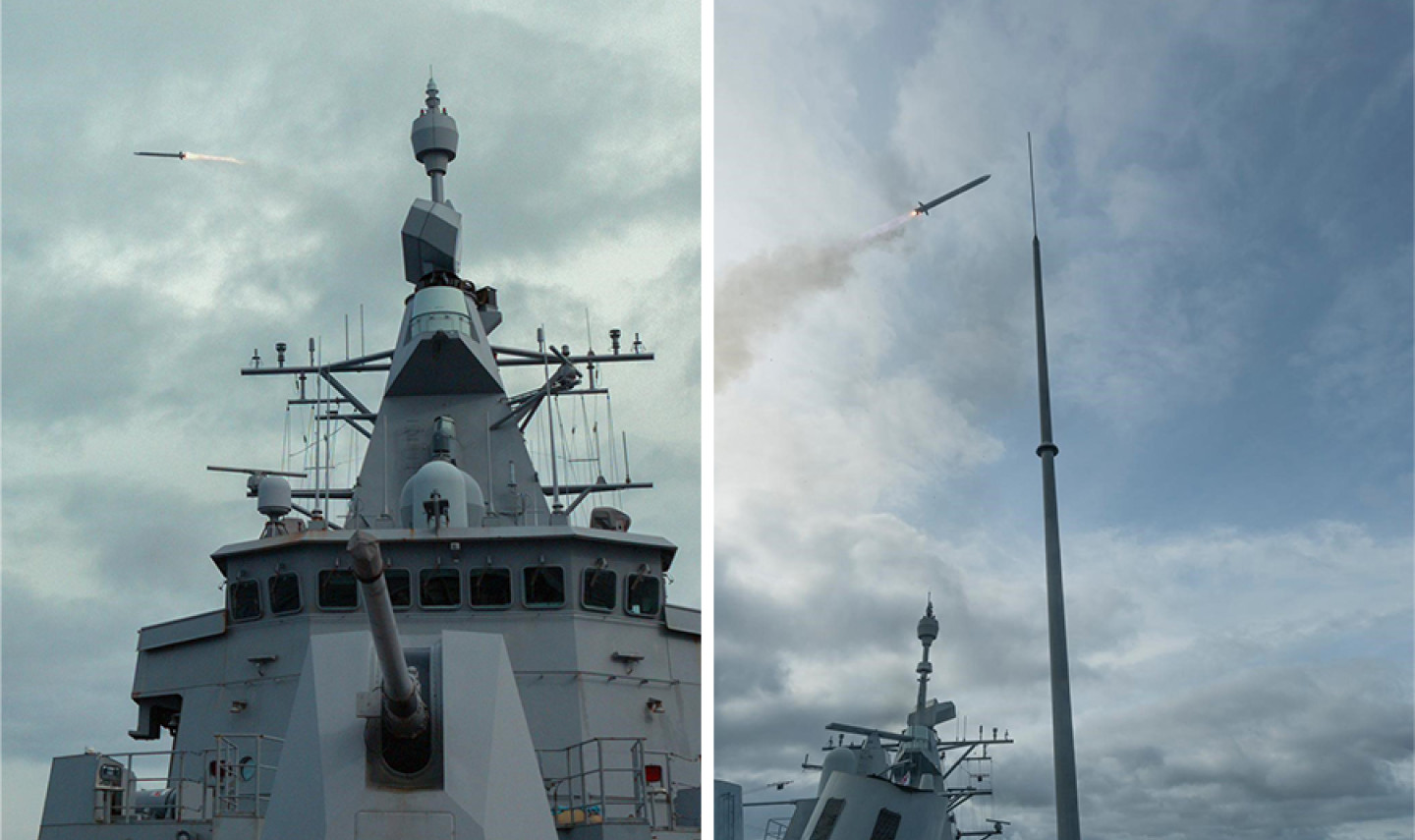Two successful missile firings from Royal New Zealand Navy (RNZN) frigate HMNZS Te Mana signalled the final tick for both Te Mana and HMNZS Te Kaha’s capability release following their Frigate Systems Upgrade. This week HMNZS Te Mana conducted two Sea Ceptor surface-to-air missile firings in the East Australia Exercise Area, which completes the final part of the frigate’s testing and evaluation process. This was the first test firing of the Sea Ceptor since the Anzac-class frigates had received the missile system during their combat, surveillance and counter-measures upgrade in Canada. The ‘threats’ were uncrewed aerial platforms, two-metre long drones, simulating inbound missiles. One was aimed at Te Mana and, two days later, one was targeted away from Te Mana to replicate an attack on another vessel operating with the ship.
The ship’s Combat Management System (CMS) identified and classified both threats and Sea Ceptor missiles were launched, intercepting and destroying the targets. The 3.2-metre Sea Ceptor has a range in excess of 25 kilometres. This test has demonstrated that the frigates have an increased ability to both defend themselves and defend another ship. All other aspects of the two Anzac frigates’ surveillance, counter measures, self-defence capability and Combat Management System have been already been proven. This now means the frigates move from a solely ‘defend self’ position to a ‘defend others’ capability which allows for the missile defence of any other platform the frigates are operating with.

The Anzac class (also identified as the ANZAC class and the MEKO 200 ANZ type) is a ship class of ten frigates; eight operated by the Royal Australian Navy (RAN) and two operated by the Royal New Zealand Navy (RNZN). The Anzac-class ships were designed with a minimum standard of offensive and defensive weapons, with other equipment fitted “for but not with”. In December 2020 Te Kaha completed initial refit upgrades and sea trials and sailed back to Auckland, arriving at the Devonport Naval Base on the 20th of December. While she has finished the upgrades she has not completed her maintenance routine. Te Mana was undergoing a major upgrade in Canada. In May 2022, the ship sailed for New Zealand having completed her upgrade.
The Sea Ceptor is based on MBDA’s common anti-air modular missile (CAMM). CAMM is being developed in three versions – CAMM (M) for maritime, CAMM (L) for land and CAMM (A) for air defence. CAMM (M) is the first to be developed, in the form of the Sea Ceptor. The supersonic Sea Ceptor missile is 3.2m long and weighs 99kg. It has a diameter of 160cm. The missile covers a range of more than 25km and provides 360° coverage. It can reach speeds up to Mach 3. The Sea Ceptor has a simple integration mechanism. It has a compact launch system that allows it to be deployed at various deck locations. The ‘soft launch’ technique reduces the weight of the system and provides installation flexibility. The missile system does not require dedicated radars because it can utilise the data interpreted by the vessel’s surveillance radars.
















